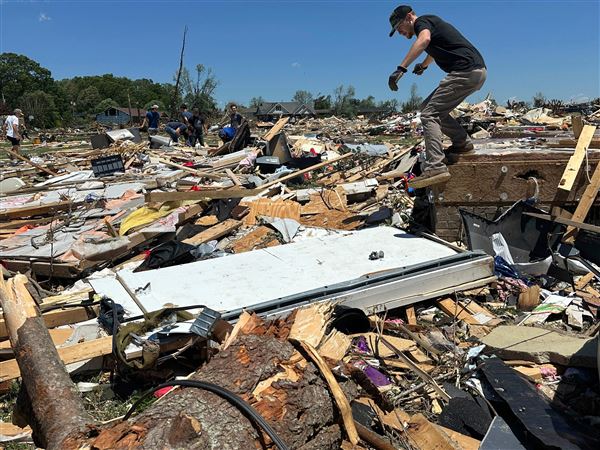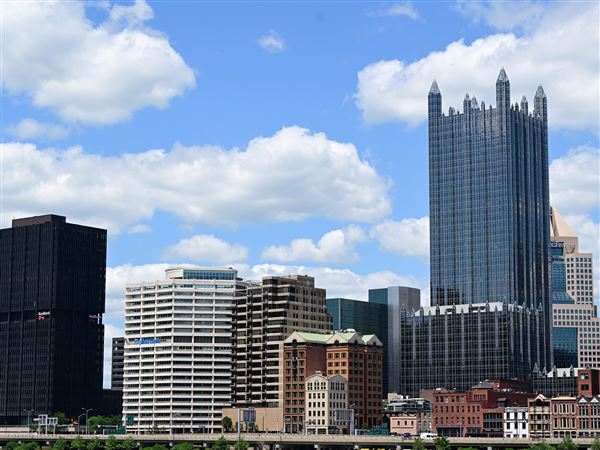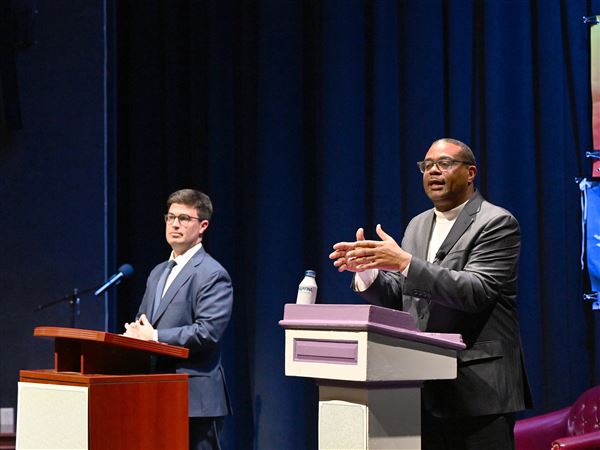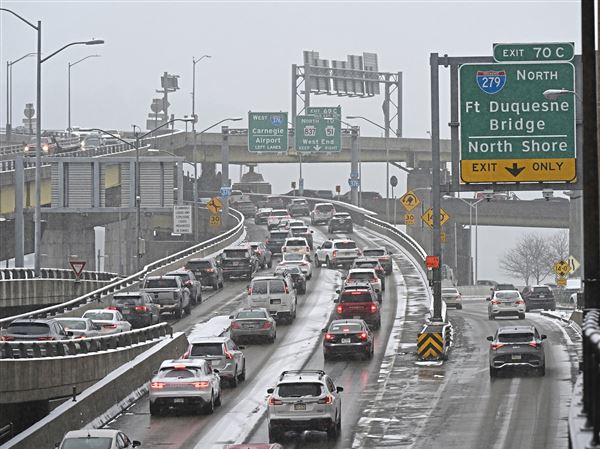Ted Dintersmith, author of “What School Could Be: Insights and Inspiration from Teachers across America,” will speak at the O’Reilly Theater in the Cultural District at 6 p.m. on May 2. Gregg Behr is executive director of The Grable Foundation and co-chair of Remake Learning (remakelearning.org).
•
Twin rails split a red-brick road in the North Side. Beneath the Birmingham Bridge, fading divots border Forbes Avenue. On an old Swissvale street, lengths of steel bend toward Nine Mile Run.
They’re not easy to find, but if you know where to look, you can still spot remnants of Pittsburgh’s old trolley system. In the region’s industrial heyday, hundreds of miles of track once connected neighborhoods to steel mills, office workers to Downtown and at least one kid to adventure.
His name was Fred McFeely Rogers, and those trolleys left an impression — so much so that he later made one a fixture on “Mister Rogers’ Neighborhood.” Though his parents were, by most accounts, a little overprotective, perhaps they felt safe letting him travel this way: After all, trolleys left little to chance. They never strayed from their predefined paths; getting from Point A to Point B simply required choosing the right track.
Of course, the automobile changed all that, putting trolleys out of business and transforming how Pittsburghers lived, worked and played. Now it’s happening again: Pittsburgh’s autonomous vehicles customize routes according to travelers’ preferences and needs, adjusting in real time as road conditions change. Even destinations themselves can shift mid-route as smartphone-wielding passengers alter their plans and communicate them instantly. This is the digital age in a nutshell: convenience and customization on one hand, uncertainty and change on the other.
For many parents, it’s an anxious time to raise a child. The facts and formulas adults once memorized — the Pythagorean Theorem, the atomic number of oxygen, the function of the Fourth Amendment — now fit comfortably in children’s pockets. The paths parents followed from school to work to retirement are fading faster than Pittsburgh’s trolley tracks. Instead, lifelong careers are on the decline, the project-based “gig economy” is on the rise, and experts think tomorrow’s workers will jump from job to job, needing to adapt each time to new and quickly changing demands.
Though the two of us come from different fields and experiences — one of us is an author and film producer, the other a foundation leader — our professional lives and our concerns as parents have led us to follow these changes closely. We’ve visited hundreds of schools and talked to thousands of students, teachers and families. What’s clear is that many of today’s parents, including us, don’t feel fully equipped to help kids navigate the rapid, remarkable changes that define our digital age. The gulf between the world as we knew it and the world our children know now has never felt wider.
That’s especially true when parents work three jobs just to keep the rent paid. Or when they feel alienated by confusing, jargon-filled “ed-speak” that obfuscates their children’s performance. (A recent survey by the nonprofit Learning Heroes found that two-thirds of parents think their child is academically above average, even though fewer than two in five kids actually achieve at grade level.) Or when parents, feeling the immense pressure of the college application process, funnel their time and resources into test prep, at the risk of dimming children’s natural passion for learning.
We’re caught in this impossible balancing act, trying to outfit kids with what they’ll need for college, what they’ll need for work and what they’ll need to live fulfilling lives. Perhaps it’s no wonder so many top institutions — including PBS, Common Sense Media and the Global Family Research Project — have turned their attention toward helping parents. Most of us can’t do our jobs alone.
The good news is we don’t have to. In Western Pennsylvania, teachers, librarians, curators and others are showing parents the way, equipping kids to thrive with a mix of high-tech tools and low-tech mindsets — along with plenty of art, science, activism and problem-solving. From the urban core to the rural farms, they’re remaking learning for the modern world: students film documentaries about changing neighborhoods, engineer real solutions to community problems and code software for their peers. They collaborate, communicate and think critically while making the world a better place than they found it. Parents wondering what the future holds need only look to the innovative schools, museums, libraries and maker spaces that grace the Pittsburgh region.
That’s why, from May 17-25, those spaces will be open to all. Remake Learning Days — the world’s largest open house for the future of teaching and learning — will showcase more than 200 free or nearly free events, focused on everything from art to technology to outdoor learning. Over the course of nine jam-packed days, kids and families can experiment with stop-motion animation, build their own working robots and even visit the largest science fair in the world: the Intel International Science and Engineering Fair. Over the past two years, more than 60,000 families have come out to join us, and this year promises to be just as big and exciting.
But beyond the sheer scale of Remake Learning Days, the festival represents something even bigger. It’s an opportunity for us parents to learn, too — to put ourselves in our children’s shoes and explore alongside them. What better way to celebrate the 50th anniversary of “Mister Rogers’ Neighborhood” than to see the world as Rogers saw it: a joyful, mysterious, magical place, full of characters to meet and new things to discover?
That’s why we boarded the trolley with him all those years. And that’s why kids still board it today, albeit with one major difference. In “Daniel Tiger’s Neighborhood,” the animated spinoff popular with young children, Rogers’ trolley still exists.
But in Daniel’s digital world, it doesn’t run on tracks.
It’s autonomous.
First Published: April 15, 2018, 4:00 a.m.

















